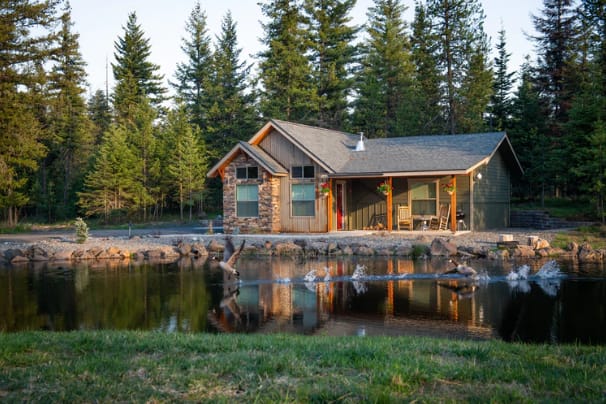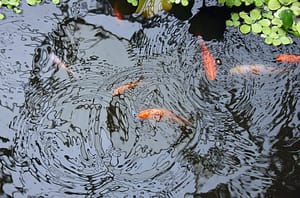
Building a Small Backyard Pond
When most guides for producing water gardens and garden ponds advocate building backyard ponds onto a flat, flat area in full sunshine and away from rocks and trees (and this is quite good guidance ), our lawn doesn’t offer you such optimum conditions. However, this didn’t prevent us from creating a distinctive successful and gorgeous backyard pond that rewarded us and is full of fish and plants. Assembling this little garden pond in a place surrounded by ledge and boulders, under trees and a small incline, was a tough task, but it also had lots of fun. For more tips on what to do to your available outdoor space, visit etspeaksfromhome.co.uk.
Preparing the Site
 We employed a garden hose to design the pond’s perimeter. Outline a place as possible when constructing your backyard pond; many owners want they had left their lake somewhat larger and somewhat darker, although the pond might appear enormous originally.
We employed a garden hose to design the pond’s perimeter. Outline a place as possible when constructing your backyard pond; many owners want they had left their lake somewhat larger and somewhat darker, although the pond might appear enormous originally.
Since we had been digging the pond to some small incline and across huge chunks of immovable granite stone, we researched the maximum point that could indicate that the surface of the pond, then used a series using a line level to ascertain which segments of the lake’s edge were under this point.
Digging In
 Digging our garden pond in the pit proved to be one shovel full of dirt at one time, and effort. Even though a hiring or leasing backhoe could have made the task easier, finding our pond made it hard to place a backhoe around the stones to aid with the digging. The result was lots of shoveling by hand. We awakened as deep as we can until we struck a “floor” of ledge stone.
Digging our garden pond in the pit proved to be one shovel full of dirt at one time, and effort. Even though a hiring or leasing backhoe could have made the task easier, finding our pond made it hard to place a backhoe around the stones to aid with the digging. The result was lots of shoveling by hand. We awakened as deep as we can until we struck a “floor” of ledge stone.
We utilized the dirt removed to backfill the exterior of this wall. Dig down your pond at least 3 ft deep (and deeper, if possible), particularly if you stay in a place with cold winter months. The thickness prevents the pond from freezing strong throughout the winter if you plan to maintain fish in your pond. Deeper water remains cooler during the summertime, along with the fish that could hide from predators such as raccoons and herons in the depths.
Laying the Pond Liner
Twist sides and the pit base with thick layers of carpet padding and papers to protect the liner from tree branches and stone that is sharp. Stretch out a rubberized coating across the ground extends over each the edges around the pond and over the high watermark. The backyard pond’s base is layered with a rubberized roof lining, bought fully, and that we found online overlaps the wall. Launched at the edge of this cinder block, we included field rock layers to make a stone wall within the pond together with shelves for crevices and plants for fish to hide. We added the pond and water, smoothing and correcting the lining for a personalized fit.…

